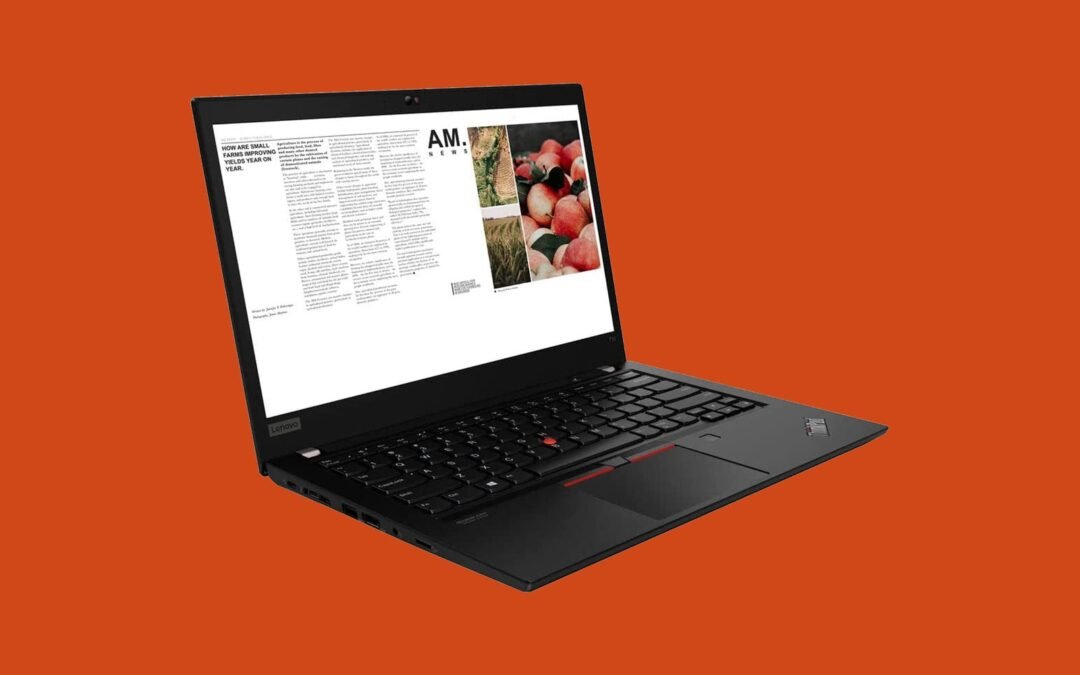Lemur Pro is not the best for graphics-intensive tasks like gaming or video editing (see below for some more powerful rigs with dedicated graphics cards), but for everything else, this is one of the nicest laptops you can get.
Best for the Minimalist
Dell’s XPS 13 Developer Edition was one of the first big-name laptops to ship with Linux and it remains the lightest, smallest laptop with Linux installed. This configuration sports a 12th-Generation Intel i7-1250U processor, 32 GB of RAM (soldered), and a 1-TB SSD. It ships with Ubuntu Linux 20.04, but in my testing, it will happily run any distro from Fedora to Arch (Dell support applies only to Ubuntu though). When you’re on the product page, make sure you choose Ubuntu Linux 20.04 LTS as your operating system (it defaults to Windows).
For more details on the hardware, see our review of the Windows version (6/10 WIRED Review). While performance was not great with Windows, I have not found the same to be true using Ubuntu. The main drawback to this machine is the lack of ports. There are two USB-C ports, one of which is your charging port. There isn’t even a headphone jack.
Best for the Maximalist
If the Dell’s lack of ports leaves you wanting, this is the laptop for you. System76’s Pangolin (8/10, WIRED Recommends) is a 15-inch, AMD-powered monster of a laptop with every port a sysadmin could hope for. This config ships with an AMD Ryzen 7 6800U, 32 GB of RAM (soldered), and a 250-GB SSD. You can configure the Pangolin with up to 8 TB of storage.
The battery life is good for the size—it lasts all day in most use cases—but it’s not as good as the Dell. The keyboard, on the other hand, is fantastic and a real pleasure to type on. The one downside is the number pad, which makes the trackpad off-center. The port selection is where the Pangolin really shines. There’s Gigabit Ethernet, HDMI 2.0, a single USB 3.2 Gen 2 Type-C port (with DisplayPort support, but not Thunderbolt), three USB-A ports, a 3.5-mm headphone/microphone combo jack, and a full-size SD card reader.
Most Repairable and Future-Proof
If you want a laptop you can upgrade, Framework’s Laptop is the best Linux rig for you. There are a few flavors available. I tested the second release of the 13-inch model (8/10, WIRED Recommends) and loved it. The Intel Core 13th-Gen series chips with 32 GB of RAM, a 2-TB SSD, and whichever mix of ports suits your needs start for around $1,400. That will ship with no operating system. When it arrives you can install Linux yourself (or opt to ship it with Windows if you need to dual boot). I haven’t had a chance to test it yet, but an AMD version is also available. Framework is also taking pre-orders for a new 16-inch model. The 16-inch model is available with an AMD Ryzen 7040 Series processor.
I tested Ubuntu, which Framework supports, and Arch Linux, and both worked great (though Framework does not officially support Arch). My only gripe about using the Framework is my gripe about almost any Linux laptop: battery life could be better.
Best Dedicated Graphics
The System76 Oryx Pro comes in either 15-inch or 17-inch models with 12th-Gen Intel processors and Nvidia graphics (either the 3070 Ti or 3080 Ti GPU). There are options for a glossy, OLED 4K screen, up to 64 GB of RAM, and up to 8 TB of SSD space. It’s not cheap, but the Oryx Pro is by far the most powerful laptop on this page. Like the Pangolin above, the Oryx ships with either System76’s Pop_OS! or Ubuntu Linux. Unlike the Pangolin, the Intel chip in the Oryx Pro means it ships with Coreboot, and open source firmware.
Best for Hackers
OK, it’s corny, but there’s something about the Lenovo X1 Carbon Linux edition that makes me want to install Kali Linux and start probing the coffee shop Wi-Fi. Whatever the case, this is a slick laptop for those of us who think ThinkPads are, ahem, slick. That slickness comes at a serious price though. For almost double the price of our other picks, you get a 13th-Gen Intel Core i7 processor, 16 GB of RAM, and a 256-GB SSD (much of this is customizable).
On the plus side, you do get a nice 2K (2,880 x 1,800), OLED, anti-glare screen. I have not had a chance to test this latest model, but I really like the previous release (8/10, WIRED Recommends,) and the new version is primarily a spec bump. It’s frequently on sale for around $1,700.
If Your Budget Is Tight
Photograph: Lenovo
One of the beauties of Linux is that it requires fewer resources and maintains support for older hardware far longer than Windows or macOS. That means you don’t need to spend a fortune on a new laptop; you can breathe life into an old one or grab a used laptop off eBay. I have been doing this for years, working my way through Lenovo’s X-series laptops (starting with an X220, now an T14 Gen 1), but old Dell and Asus laptops are also great for Linux. If you opt to buy used, have a look at our guide to buying used on eBay to make sure you get a good deal.


